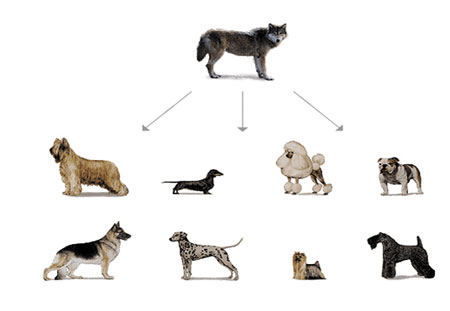
NOVEMBER 5, 2014
Who’s Your Daddy? DNA testing for dogs?
![]()
Have you ever wondered why your dog’s coat is shaggy, or why his ears are so long? How about why he is so friendly or extremely active?
DNA is the genetic code or the building blocks that make up all living creatures, from mammals such as humans and dogs to microscopic bacteria and fungi. DNA testing has advanced recently and is now available to veterinarians and dog owners.

Dove Valley Animal Hospital is excited to offer this new technology for our patients and their families through Royal Canin’s Genetic Health Analysis. Genetic Health Analysis not only provides the breed mix of your dog, but also screens for certain genetic mutations that may cause disease in your dog by identifying different codes present in the DNA of your dog.
The benefit of information gained from DNA testing can vary depending upon the pet and family. For your average family dog, the major benefit may be simply answering the question ‘What breed is my dog?’ and knowing the expected size and weight at maturity. For others, knowing what diseases your four-legged family member may be predisposed to developing is critical so early symptoms can be recognized and addressed. Pre-screening for certain genetic mutations is most beneficial for breeding animals to minimize passing these traits to future puppies. Regardless, DNA testing offers one more piece of information to add to the overall health picture of your pet.
Testing is quick and minimally invasive. A DNA sample is collected via a simple blood draw and submitted for analysis. Analysis typically takes 2 to 3 weeks, once the sample is received at the lab. When results become available, consultation with your veterinarian will help you develop an individualized health and wellness plan.
For more information contact Dove Valley Animal Hospital at 480-595-5731 or visit their website at www.dovevallyah.com.
Canine diabetes
Canine diabetes, or diabetes mellitus, is a common disease in dogs and is the result of inadequate insulin production.
“Canine diabetes is usually caused by an immune mediated attack on the pancreas, which is likely related to genetic predispositions,” said Dr. Audrey Cook, associate professor at the Texas A&M College of Veterinary Medicine & Biomedical Sciences. “It may also be secondary to chronic pancreatitis, or may occur in intact females following their heat cycle.”
Some predisposed breeds include the cairn terrier, the dachshund, and miniature poodles. Although these breeds have a higher incidence than others, all dogs have a chance of becoming affected.
Diabetes mellitus is known to cause excessive thirst and urination due to the high concentrations of glucose in the bloodstream. “Hunger is also a common symptom in the early stages of diabetes, followed by rapid weight loss,” said Dr. Cook. “Vision loss is sometimes reported.”
Glucose appears in the urine, and can predispose the patient to urinary tract infections. Left untreated, other signs such as vomiting, dehydration and lethargy are expected.
“It is usually recommended that the dog receives insulin by injection twice a day,” said Dr. Cook. “Unlike many human diabetics, we cannot manage this disease with diet or oral medications. Canine diabetes is generally irreversible, and dogs will need insulin therapy for the rest of their lives. However, if diabetes develops soon after a heat cycle, some females may undergo remission following a spay.”
Each diabetic dog varies, so you will need to consult with your veterinarian to determine the appropriate insulin dose and treatment regimen for your pet.
It is also important that insulin injections are administered properly, so it is advised to have your veterinarian instruct and observe you giving the insulin to your dog. At first you may be nervous giving your dog an injection, but you can quickly learn how to do this with very little stress for your pet or for you.
Another important part of diabetes management is ensuring that your dog follows a consistent, stable routine. “They should be fed two meals a day of a well-balanced, high quality diet,” said Dr. Cook, “and definitely no table scraps.”
Although diabetes mellitus can’t be cured, the condition can be successfully managed, helping your dog to lead a happy, active life.
Pet Talk is a service of the College of Veterinary Medicine & Biomedical Sciences, Texas A&M University. Stories can be viewed online at www.vetmed.tamu.edu/pet-talk.



